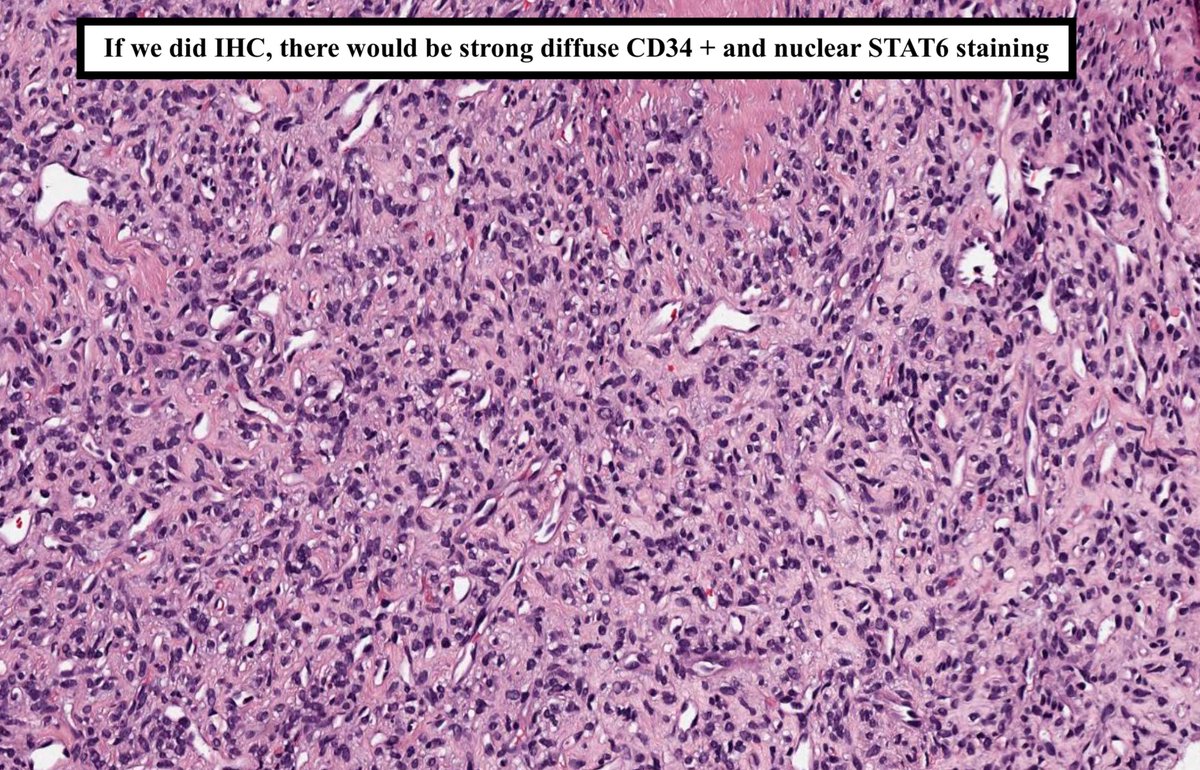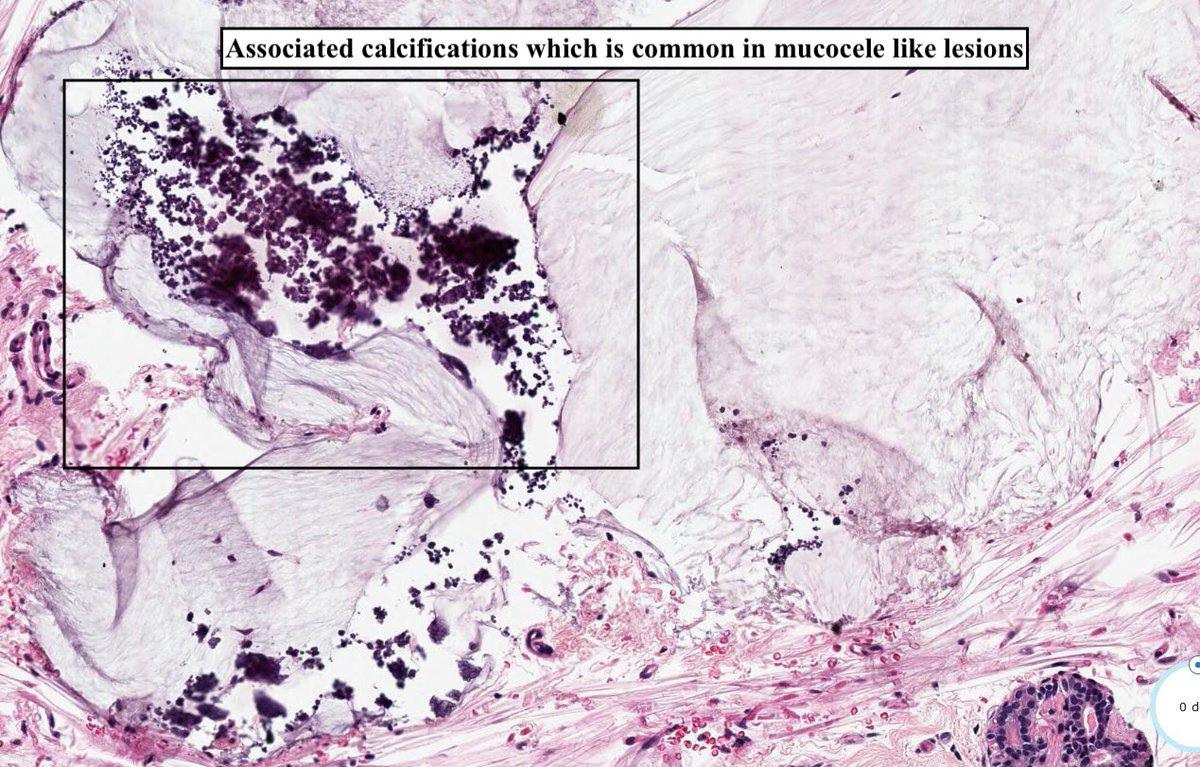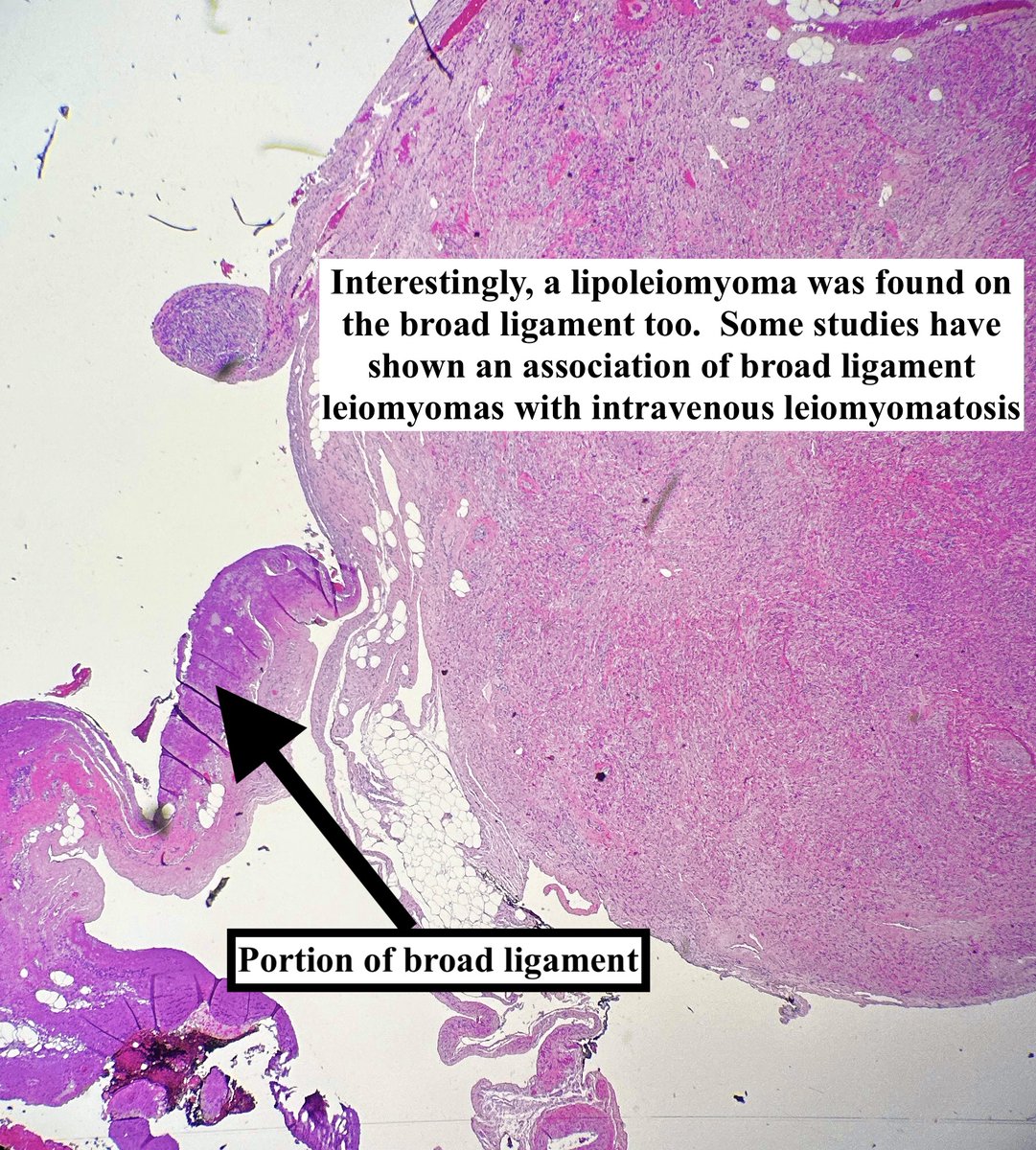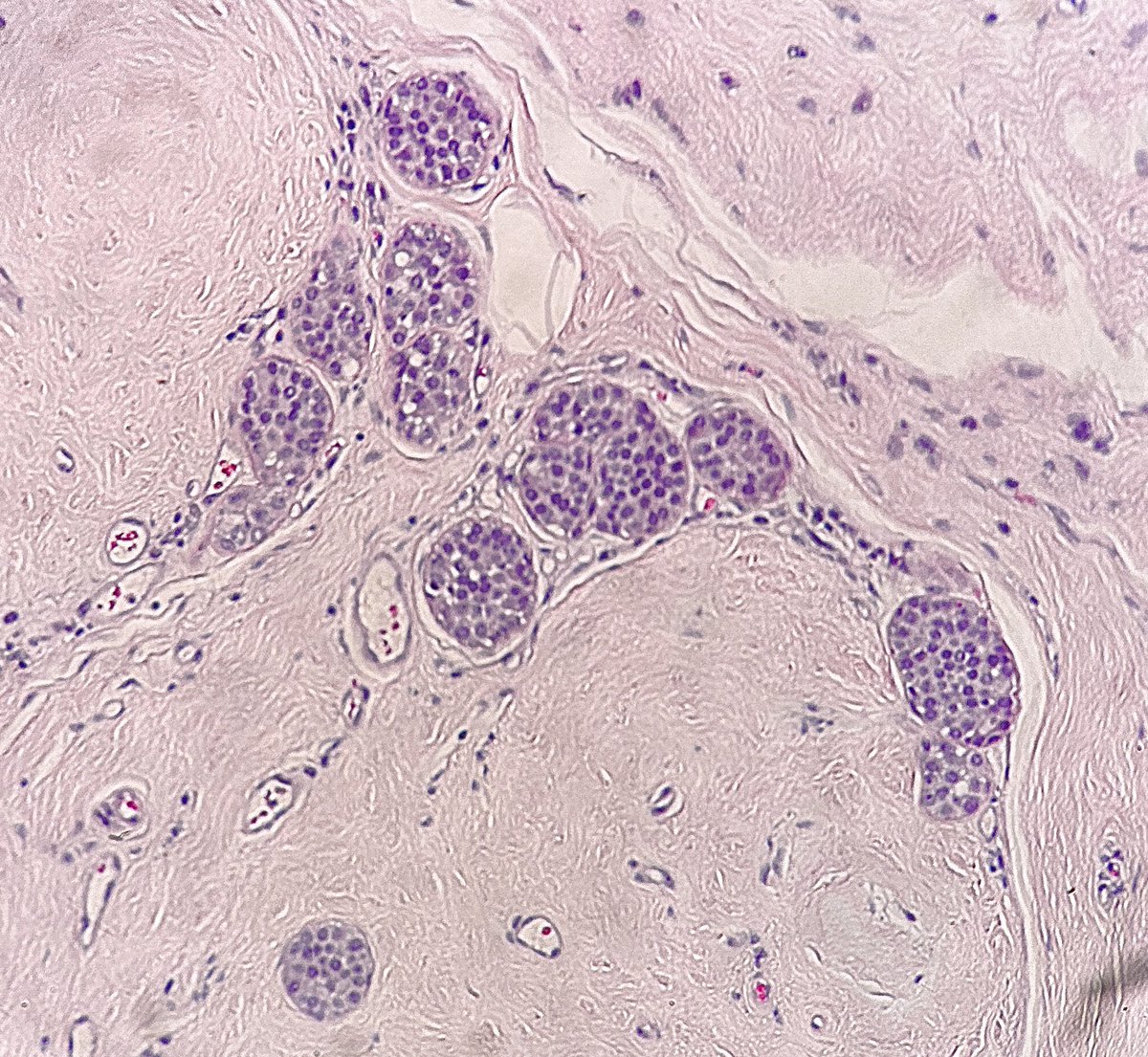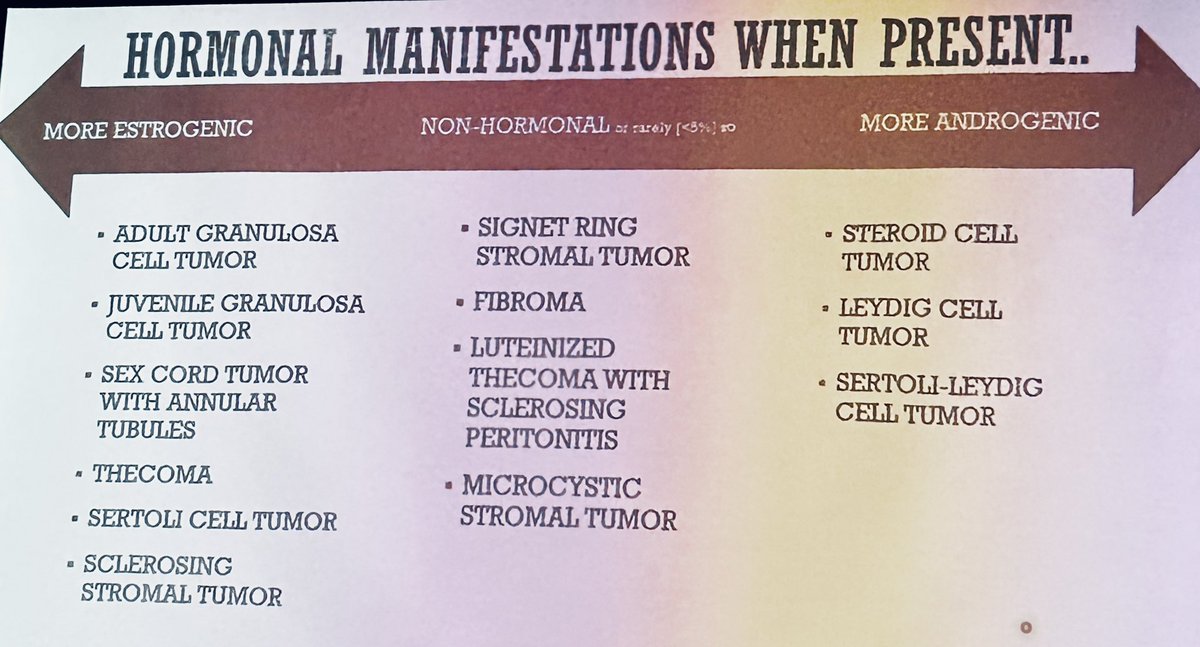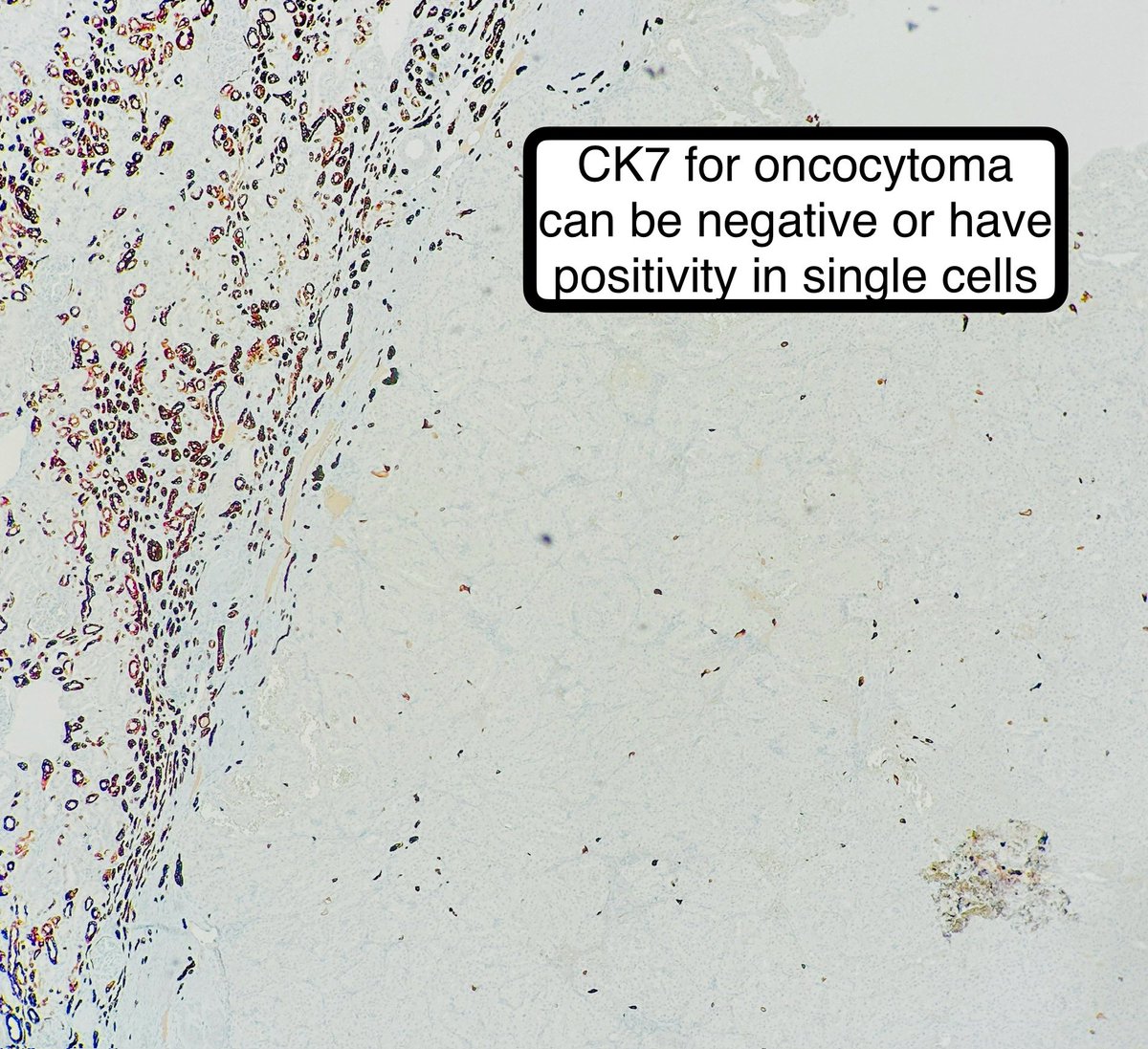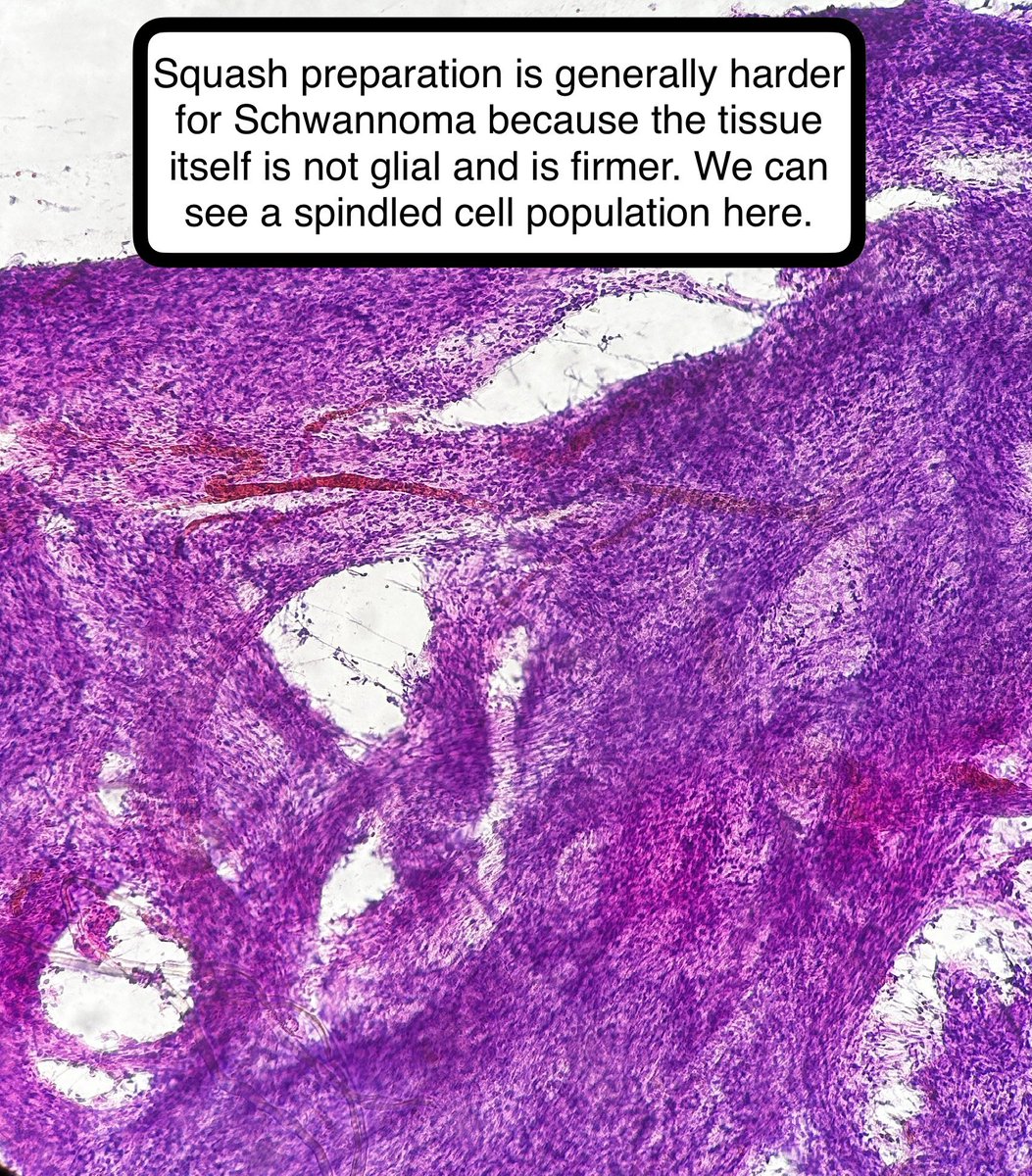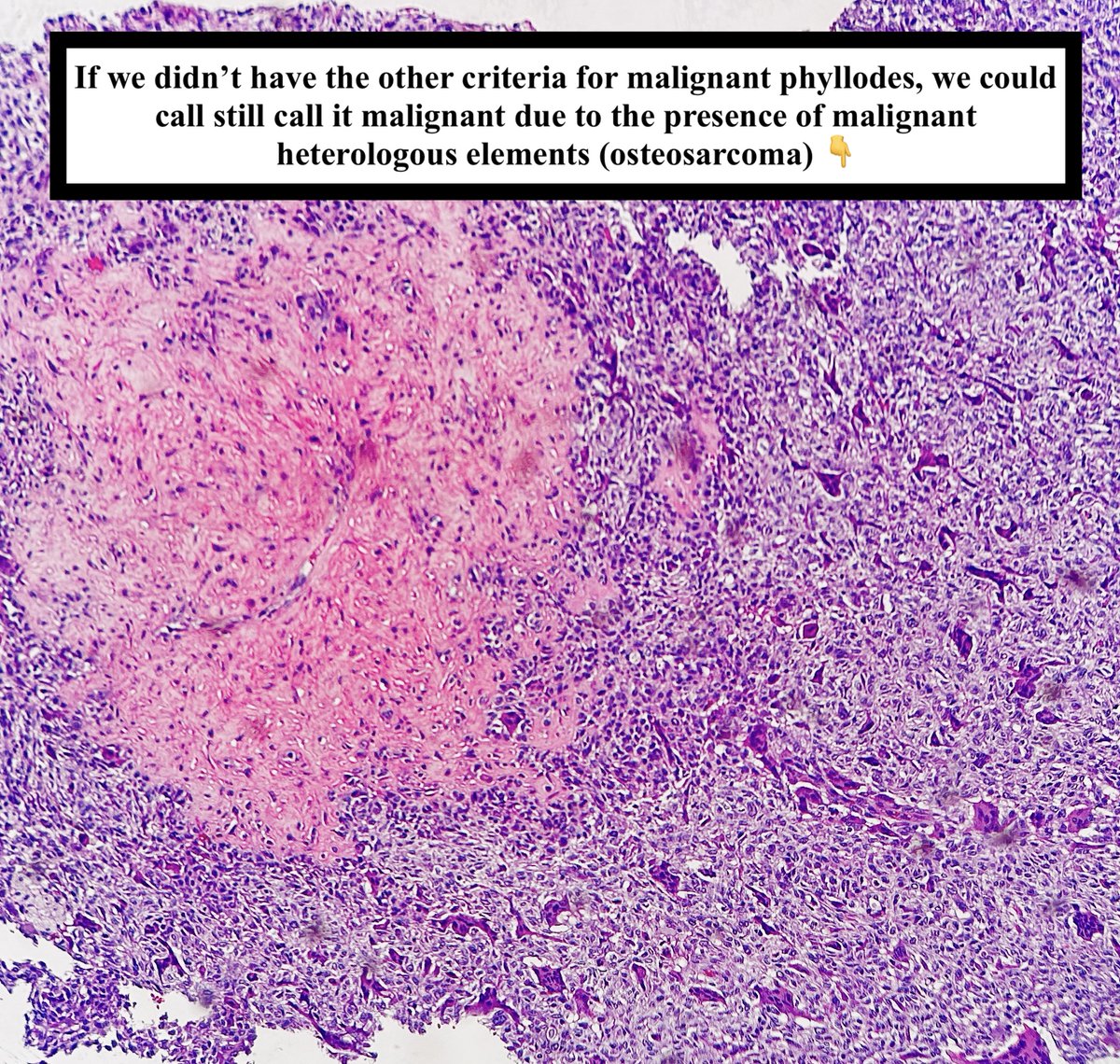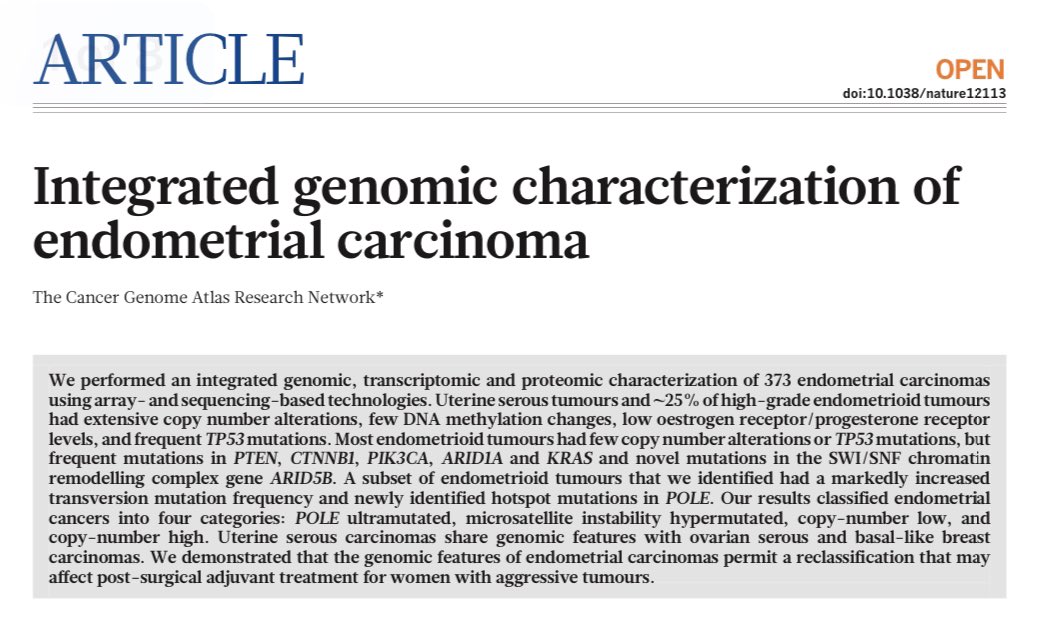
Seminoma
• #1 testicular germ cell tumor
• Syncytiotrophoblastic cells may be seen
• Associated testicular atrophy can be seen 👇
• IHC:
OCT3/4; KIT/CD117; SALL4 +
CD30 and AFP -
#pathagonia #pathx #gupath #pathology #seminoma #pathology #medx
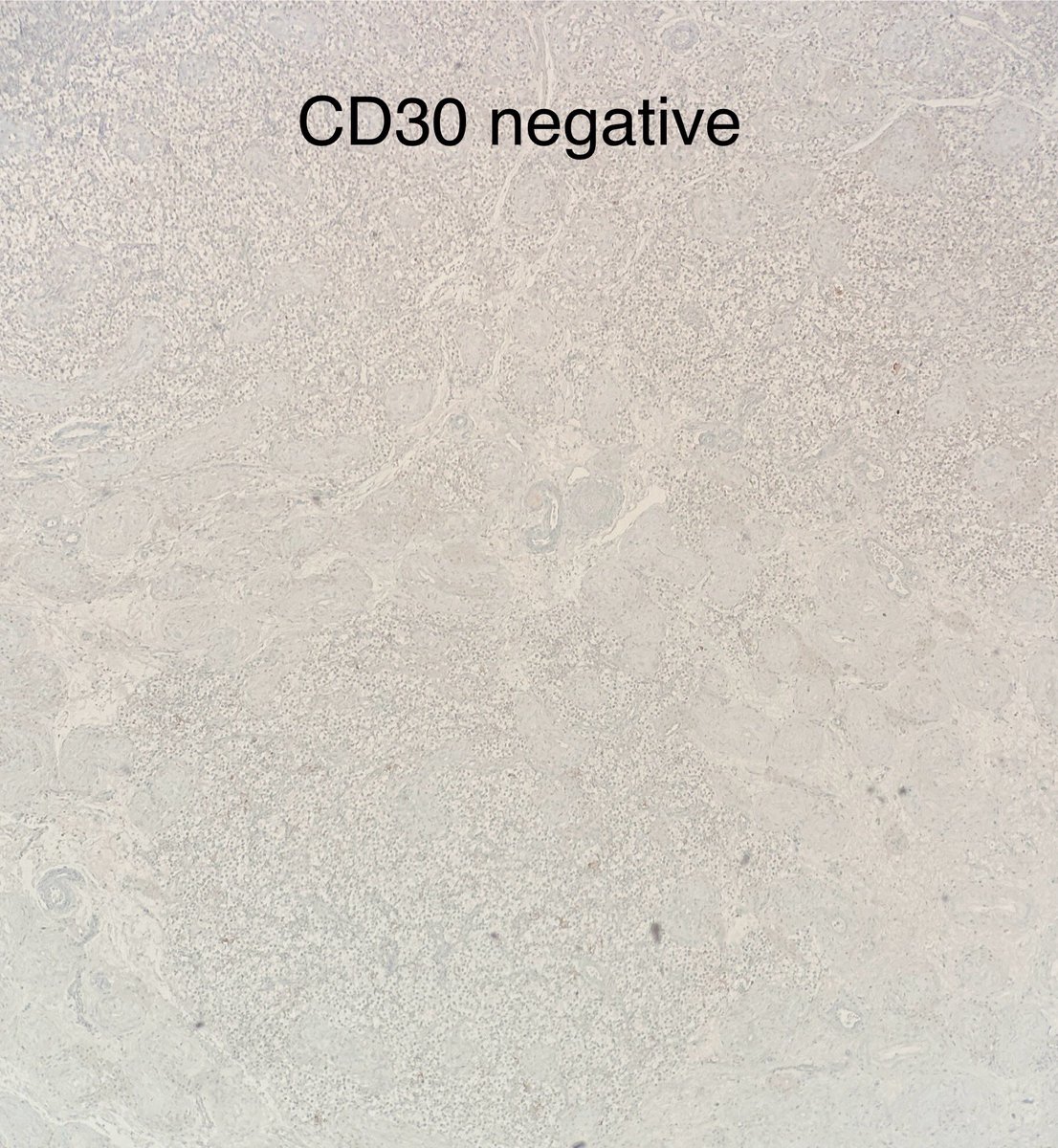


S100
• Stains Schwann cells and melanocytes
• Stains Adipocytes
• Stains (I often forget) myoepithelial cells in breast too 👇
#pathagonia #path4people #pathx #ihc #s100 #pathtwitter #breastpath
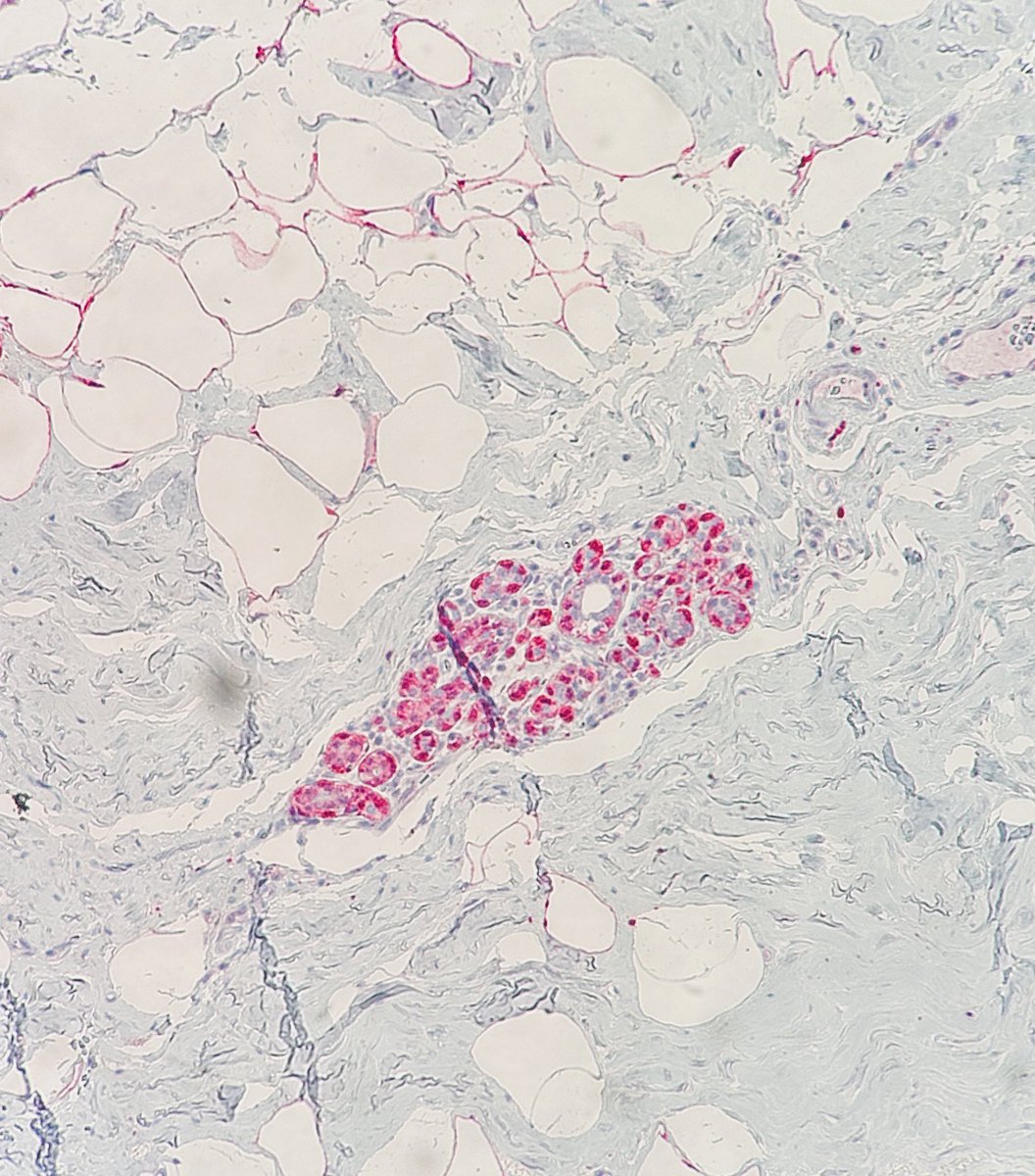

Gastric Xanthoma
• Benign
• Endoscopically 👀 as yellow-white nodules
• Most common location-Antrum
• Foamy macrophages in lamina propria
• Etiology unclear
• Associated with background gastric pathology
#pathagonia #path4people #gi path #pathx #gi #gastroenterology


Spironolactone Bodies
• Concentric lamellations 👇
• Seen in adrenal tissue of pts with primary hyperaldosteronism (Conn syndrome) treated with aldosterone anatogonists (eg. Spironolactone)
• Adrenalectomy done as medications were ineffective
#pathagonia #pathx #pathtwitter
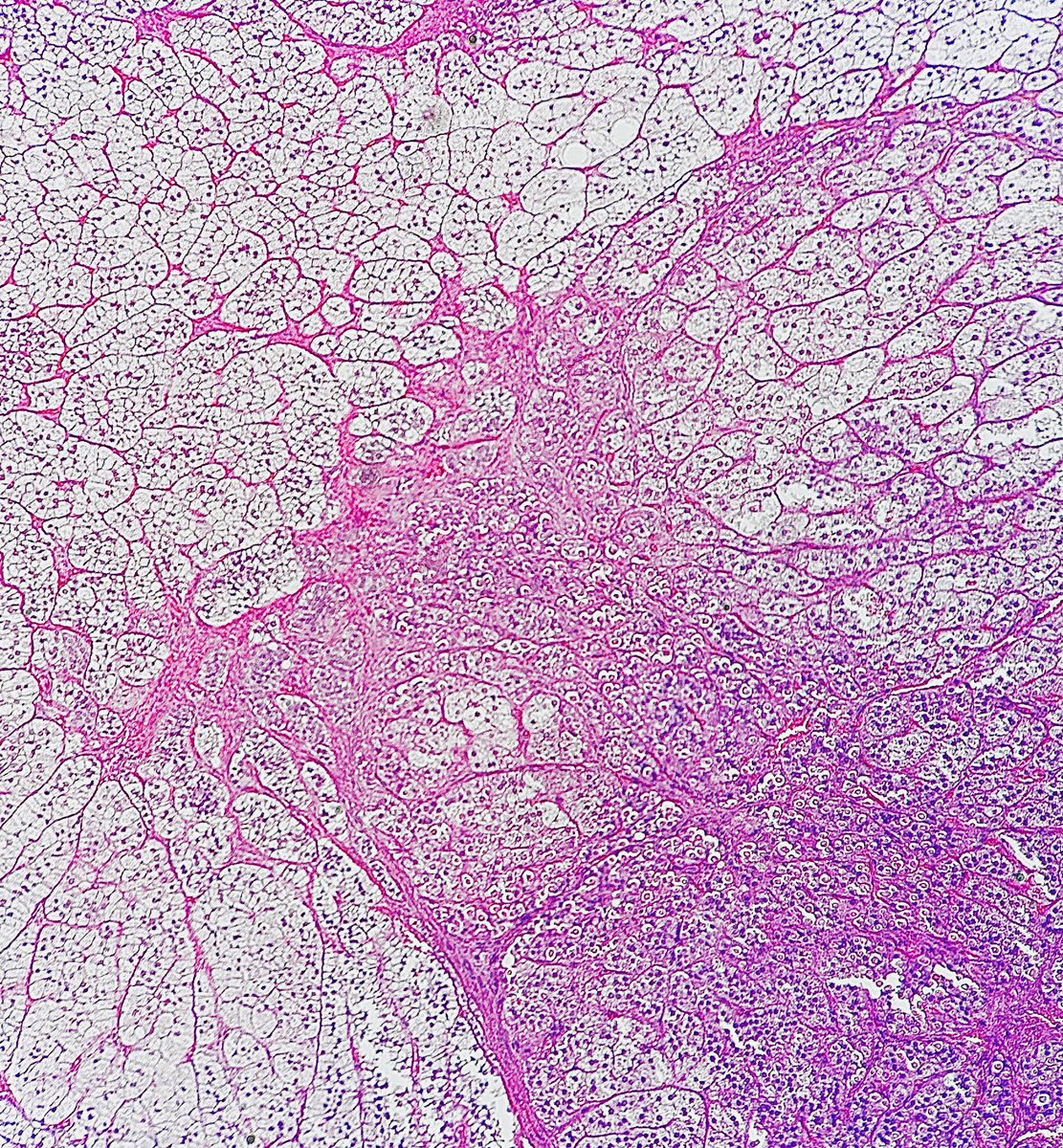

Complex Fibroadenoma
Needs one or more:
1) Cysts greater than 3 mm
2) Epithelial (not stromal) calcifications (see below)
3) Papillary apocrine Metaplasia
4) Sclerosing adenosis
⬆️ relative risk ~ 3x for breast cancer (citation 👇)
#pathagonia #path4people #pathx #breastpath
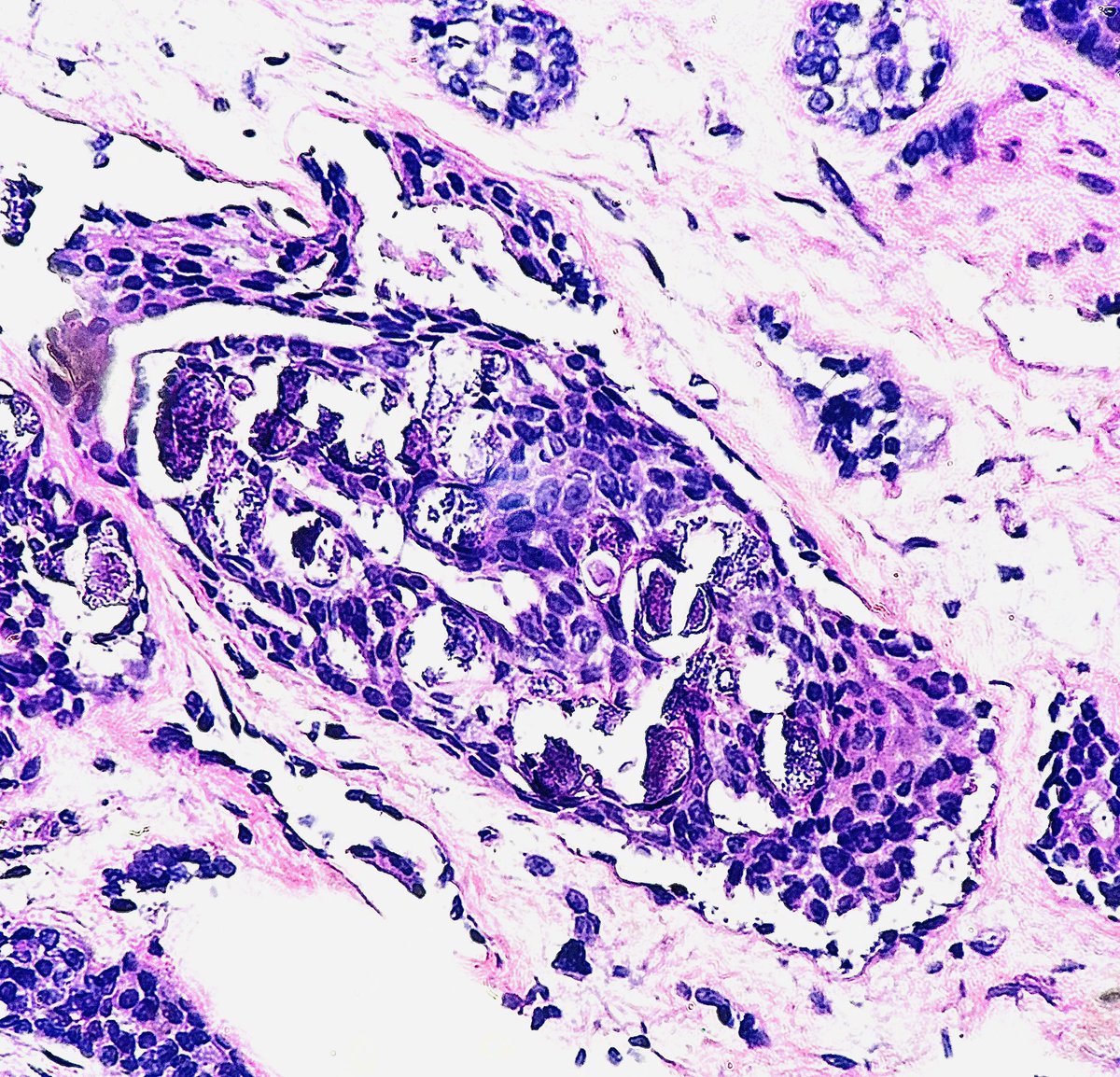




Hashimoto Thyroiditis
• #1 cause of hypothyroidism in iodine sufficient regions
• 🔬 lymphoplasmacytic infiltration, follicles w germinal centers, oncocytes, fibrosis
• Increased risk of primary thyroid lymphoma and papillary thyroid carcinoma
#pathagonia #pathx #medstudent
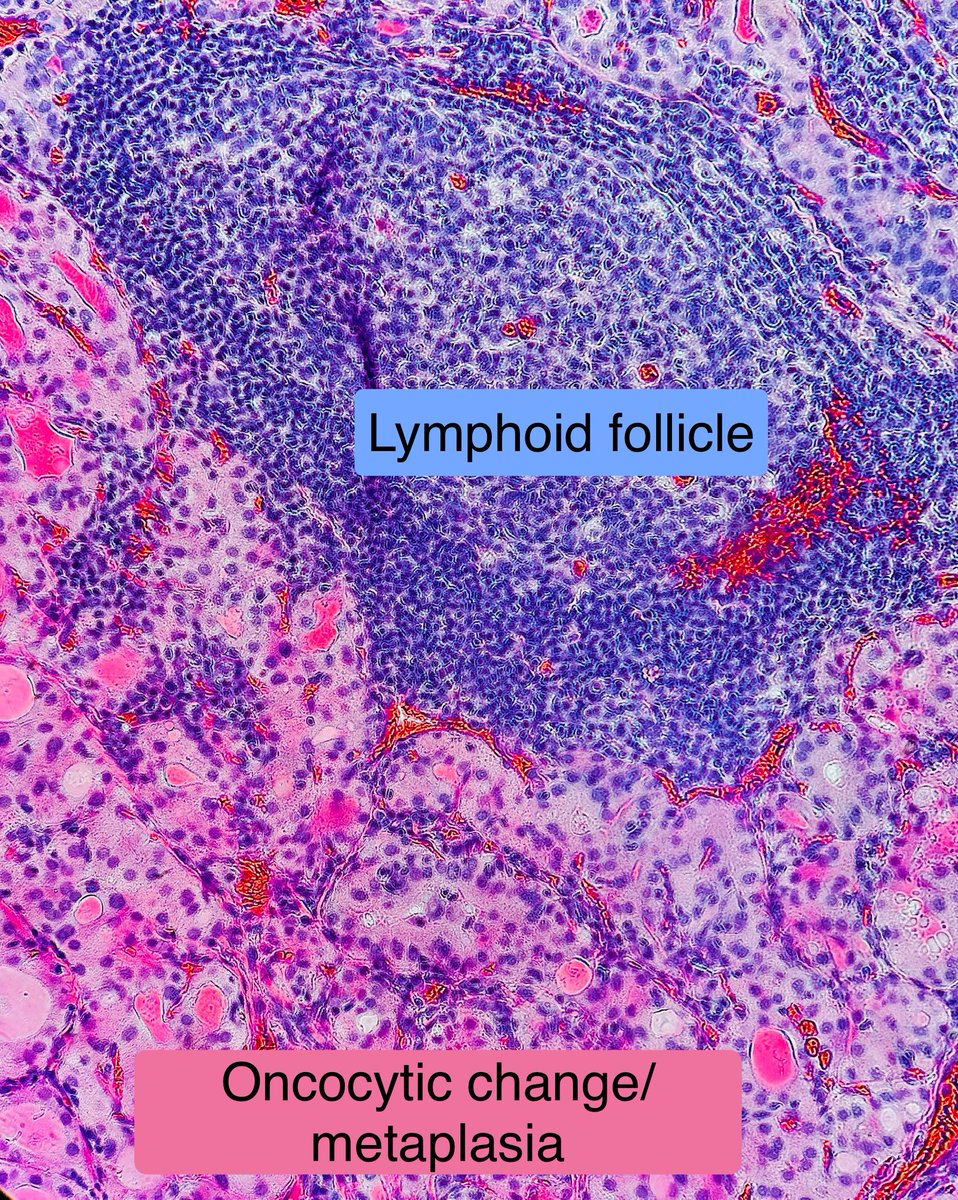

HSIL
• Nucleoli can be tricky because it can be seen in reactive conditions.
• But sometimes they can be seen in HSIL esp when it involves endocervical glands
#pathagonia #pathx #path4people #gynpath #obgyn #hpv #hsil #pathtwitter #pathology #gynx #obgyn x #surgpath #medx
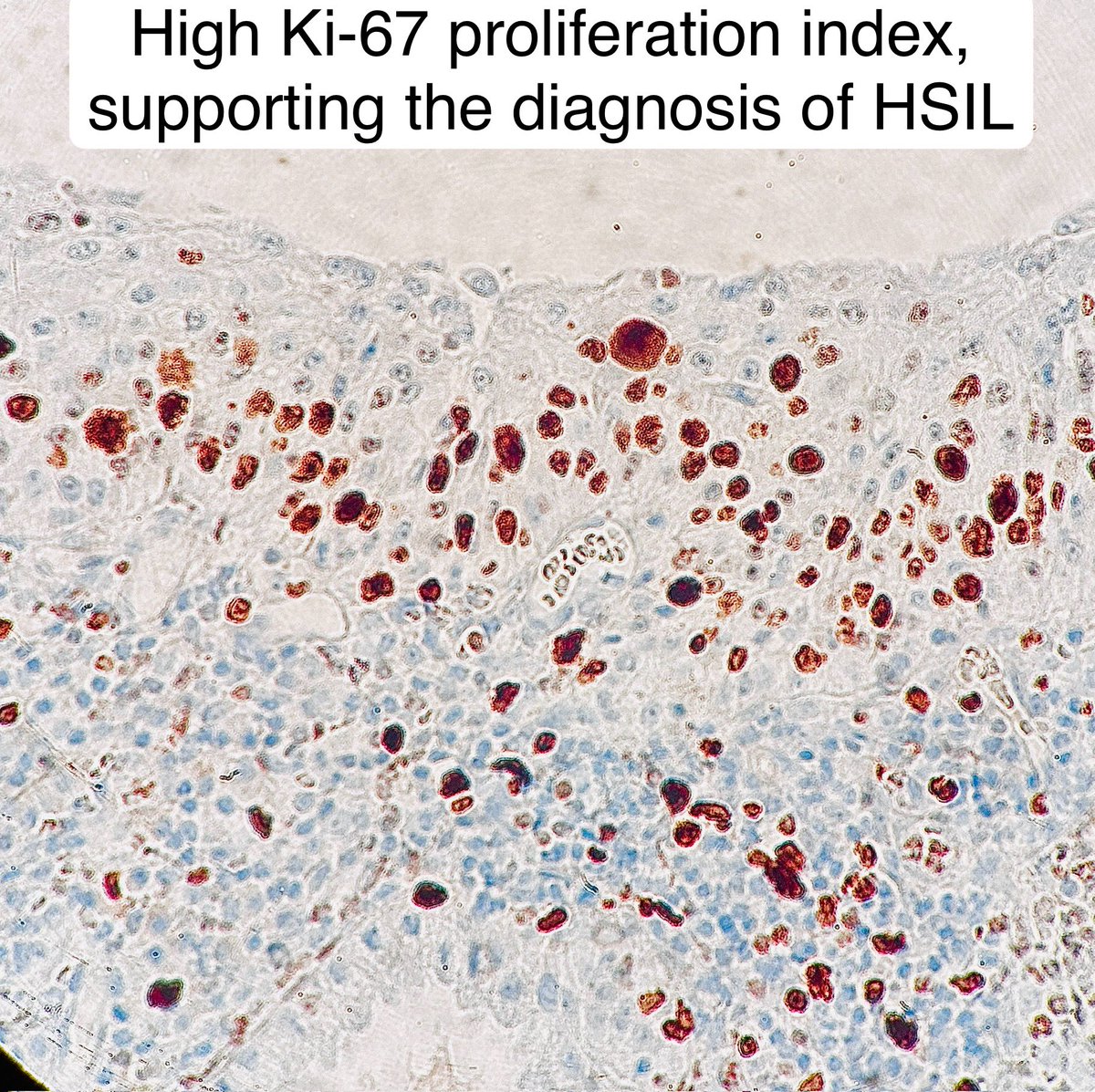

Embryonal Carcinoma
• #2 most prevalent testicular germ cell tumor (after seminoma)
• Peak incidence is 30 y/o (10 years younger than seminoma)
• Most common element seen in mixed germ cell tumor.
• IHC: CD30 and AE1/AE3 +
Image Credit: Kelly Hall, MD
#pathagonia
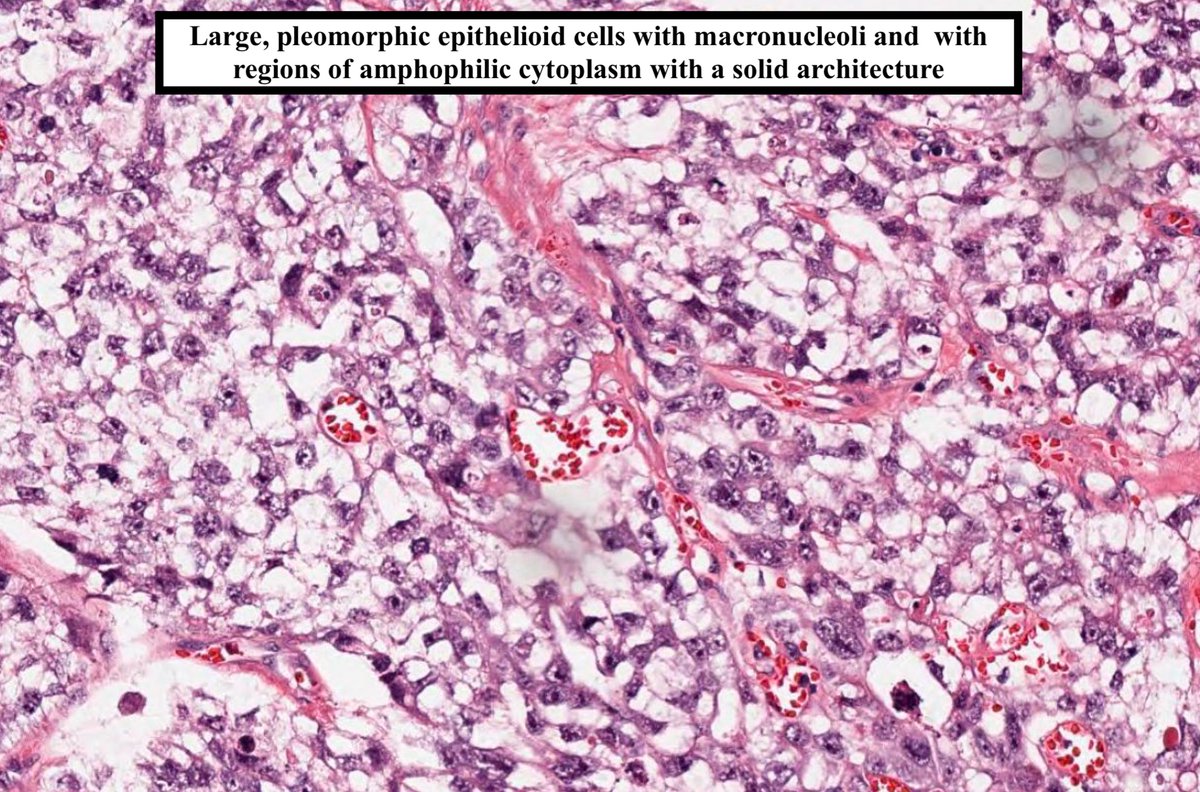

Neuroendocrine Tumor (NET) of Appendix
• 80% are found incidentally after surgery for appendicitis
• Most common location: tip
• Not always nested architecture: can be trabeculated, in acini,and ribbons
Pretty subtle in my opinion👇
#pathagonia #path4people #pathx #medx
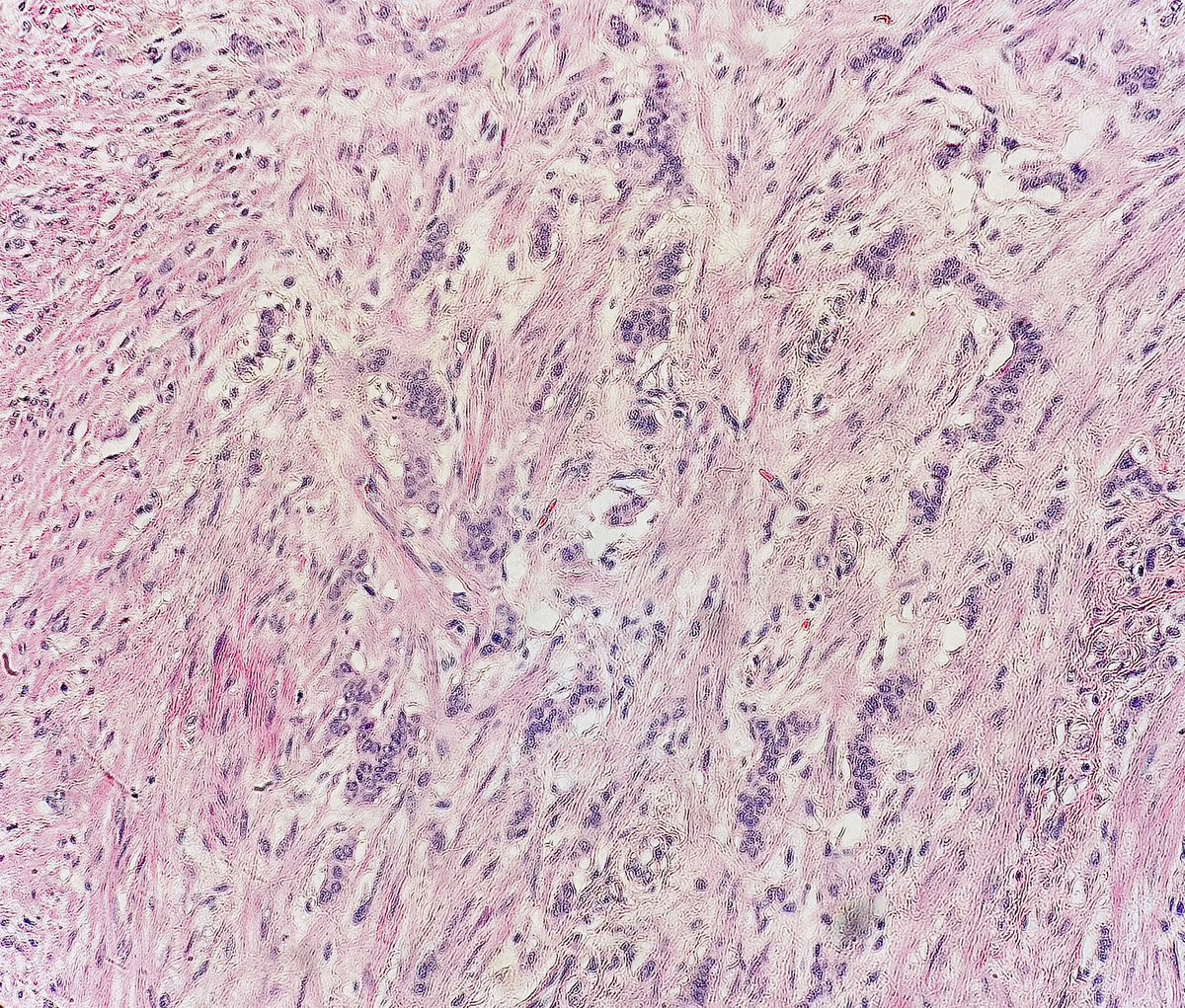

Solitary fibrous tumor (SFT)
• Fibroblastic tumor; can occur anywhere in body
(superficial +deep soft tissue, bone, visceral organs, CNS, salivary gland)
• Peak incidence:40-70 y/o; may undergo mets
• Molecular: NAB2-STAT6 fusion
Image credit: Kelly Hall, MD
#pathagonia
